Wednesday October 8, 2025

Kirsty Muddle to lead Ogilvy ANZ as CEO
Ogilvy has appointed Kirsty Muddle as its new CEO of Ogilvy Network ANZ, marking the start of a new era for the creative network following Sally Kissane’s departure earlier this year.
Muddle, a widely respected creative industry leader, will oversee Ogilvy’s trans-Tasman operations across advertising, PR, social and influencer, customer engagement, consulting, and health.
The appointment continues Ogilvy’s momentum after a strong year of client wins and award recognition, including Tourism New Zealand and Specsavers, and multiple accolades at the 2025 APAC Effie Awards.
A ‘modern marketer built for the emerging world’
Muddle joins from Dentsu, where she serves as CEO of Practices & Products for Australia and New Zealand, leading disciplines across creative, PR, government, customer experience, Salesforce, data and tech, commerce, and B2B marketing and media.
Her 25-year career spans agency leadership, media strategy, and creative innovation – a mix Ogilvy’s leadership believes is essential for navigating today’s hybrid media and marketing landscape.
Laurent Ezekiel, Global CEO of the Ogilvy Group, said Muddle’s leadership approach stood out for its mix of commercial rigour and creative clarity.
“Kirsty has an undeniable track record of delivering real value and impact for clients. She deeply understands the complex challenges businesses face today and champions creativity not just for its own sake, but as a powerful force that can solve those challenges,” he said.
“Her ability to build strong, trusting relationships with clients, always putting their needs first, and her knack for bringing together diverse capabilities, from social and influencer to cutting-edge technology and data, to create truly impactful solutions, makes her an exceptional leader for Ogilvy in this key market.”
Rose Herceg, WPP President for Australia and New Zealand, added that Muddle represented “the rare blend” of creative instinct and operational excellence the network was seeking.
“When we searched for Ogilvy’s new leader, we felt we were asking for a unicorn, a modern marketer built for the emerging world, with strong business experience across the communications spectrum,” Herceg said.
“In Kirsty, we found that rare blend; a genuine love for creativity that moves mountains, coupled with experience harnessing the disciplines that creativity needs to thrive in a dynamic, fast-moving media landscape.”
From founding partner to network leader
Before joining Dentsu, Muddle co-founded cummins&partners, helping to establish its reputation as a creatively ambitious, client-focused agency.
She also spent nine years at Mindshare in the UK and Australia, sharpening her understanding of data, audience insight, and the evolving media ecosystem.
Her leadership experience spans creative and media, giving her a unique perspective on how brand storytelling intersects with technology and human behaviour.
Muddle said Ogilvy’s enduring focus on creativity as a growth driver made it the right next move.
“Ogilvy is a place where every leader I’ve encountered has a strong point of view, saw change as an opportunity, and spoke with clarity about AI, data and integration but wasn’t lost in it,” she said. “Importantly, they also never forgot why this business was born, the power of creativity to drive growth. That enduring belief made Ogilvy feel like home.”
She added she was “humbled to partner with an incredible set of clients and the exceptional talent within both Ogilvy and WPP to harness the network’s full power and collectively move us all forward into what’s next.”
A new chapter for Ogilvy ANZ
Muddle will officially begin her role in early 2026, succeeding Sally Kissane, who stepped down in July after three decades with Ogilvy.
Her appointment follows a string of major client and creative wins for Ogilvy ANZ, including its Network of the Year title at the 2025 APAC Effies. The agency also earned Gold in Youth Marketing for “A Masterclass in Government Sex Talks” for the Department of Health and Aged Care, and Silver in Engaged Community Services for “Flying High in a Frugal World” for KFC.
Beyond her agency work, Muddle sits on the boards of the Australian Council of Advertising (ACA), the Australian Association of National Advertisers (AANA), and Ridgeway, an Indigenous social change agency. She has been awarded Woman of the Year and Executive of the Year twice.
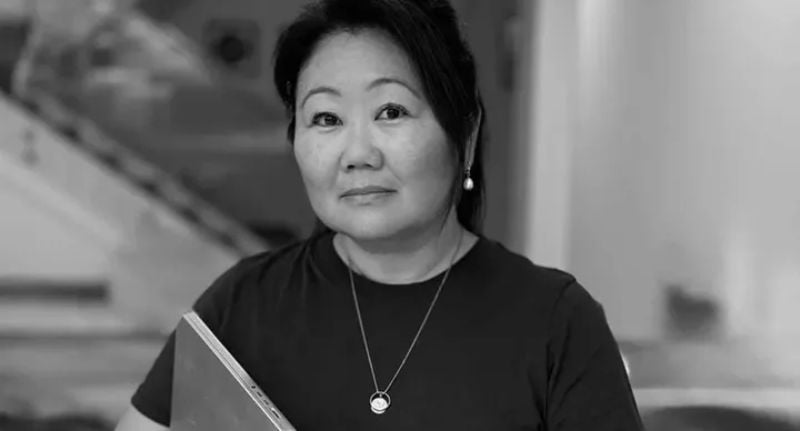
RecipeTin’s Nagi Maehashi calls out PR agencies in social post
RecipeTin founder and bestselling author Nagi Maehashi has taken a swipe at Australian PR agencies after being bombarded with unsolicited brand pitches, some offering nothing more than a “free bowl of pasta” in exchange for social content
‘Please take my personal details off your database’
In an Instagram story posted last night, Maehashi made her frustration clear, writing:
“Please take my personal details off your database. How did you even get my private email address?
No, I am not interested in creating:
3+ Instagram stories
An IG reel or carousel post to promote your clients’ restaurant / product in exchange for a FREE packet of Reeces or a FREE bowl of pasta.
It’s 2025. Spray-and-pray-copy-paste email blast outs aren’t a strategy anymore.”
Given Maehashi’s cookbooks have generated more than $34 million in sales, it’s not hard to see why she’s not chasing free meals.
The social post follows months of heightened attention on Maehashi, who recently made headlines over recipe plagiarism claims involving fellow cookbook author Brooke Bellamy.
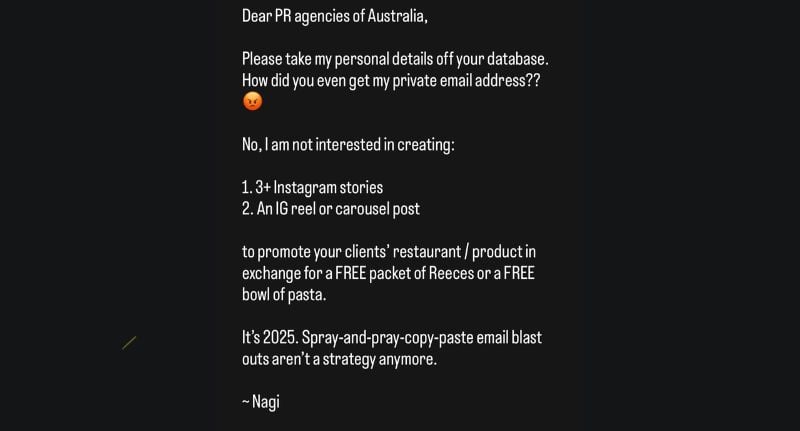
‘Relevance and respect should sit at the heart of every pitch’
PR expert Sandra Hogg, Director at Mohr PR, says Maehashi’s comments should serve as a wake-up call for the industry. “Blanket blasts might feel efficient, but they just burn bridges,” she told Mediaweek.
“Creators expect the same level of strategic thinking we apply to media, so before approaching anyone, take five minutes to do your homework: understand their audience, content style, and values to ensure the partnership delivers genuine mutual benefit.”
Hogg added that transparency and professionalism matter: “Using personal emails or offering token freebies is a fast track to the blocked list. The best collaborations come from genuine alignment and will land better than a copy-and-paste blast, no matter how big or small your client is.”
How PRs can avoid ending up on the blocked list
For those taking notes, Hogg offered some straightforward advice:
• Journalists and creators aren’t your clients – give them something their audience will care about, not a sales pitch.
• Personalisation beats persistence – a tailored, thoughtful pitch will always outperform ten generic follow-ups.
• Timing is everything – know their deadlines before you hit send.
• Keep it short and relevant – if your pitch can’t be understood in a few lines, it’s probably not news.
• Be honest – if your client’s story isn’t major news, help them find a better channel.
As Maehashi’s post continues to make the rounds, it’s a timely reminder for PRs: relationship-building beats spray-and-pray every time.
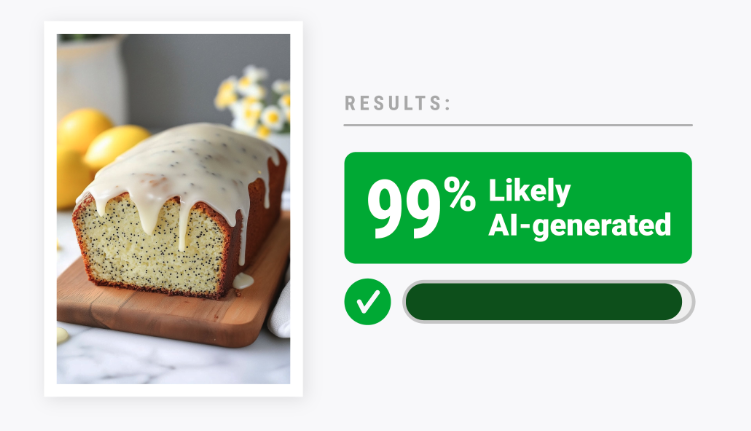
Protection of brand safety against AI slop is challenged in the age of SORA 2
Back in July, digital media verification firm DoubleVerify published a blog article about the importance of recipe sites posting real photos and not AI-generated images. The firm argued that while cooking and recipe sites offer valuable advertising opportunities, advertisers should consider the low-quality signals AI imagery displays and that there is value in talking with partners to ensure there’s brand alignment.
Since the blog post was published, we have seen the launch of OpenAI’s new video generation tool SORA 2, which furthers the question about how people engage with AI generated imagery.
In talking with DoubleVerify’s Chief Innovation Officer Jack Smith, there was one question that was top of mind:
Do most people actually care if an image or video is fake?
This is a question especially relevant when it comes to food photography, which has a long-held reputation of images being manipulated and manufactured by photographers. Is AI generation images of delicious-looking food actually a problem?
“I’ve said for a long time that even if you go back to Ansel Adams, you’re looking at [a photo of] Yosemite, and you go to Yosemite, it doesn’t look like that. So there’s always been this notion that photographers would manipulate images,” Smith said, evoking the name of one of America’s earliest, most iconic, landscape photographers.
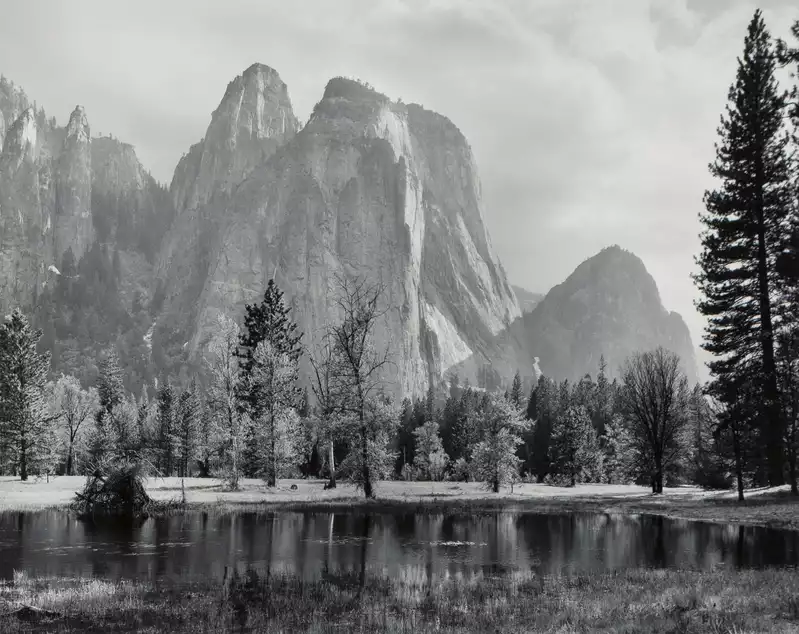
Ansel Adams photography of Yosemite
“[In regards to food photography] I think it’s a little bit different here where there are pros and cons, right? It’s the ability for non-professionals to create visual content of high quality. On the other side of that, it’s also created an explosion of AI slop.
“Really terrible content that might look on the surface as being good, but it’s just more garbage. And the ability for someone to scale that up has become easier and easier. As SORA 2 or SORA 3 or SORA 10 comes out, the quality of the images are going to get better, but that doesn’t mean that the script is necessarily going to get better at that rate, or that it won’t be just more AI slop trying to grab the attention of consumers.”
While images that look immediately like an AI generation might frustrate media-savvy people like Jack Smith and the editor of Mediaweek, there are a lot of people who aren’t bothered by the fakery of an AI-generated image. For advertisers who are equally concerned, by avoiding sites and channels that publish images and videos with AI slop, is there a risk of losing access to audience segments who just don’t care?
“You’ve got to remember, there’s a value exchange between the publisher and the consumer: I will give you my attention if you give me quality content,” Smith said.
“It becomes a question, if you’re a marketer, of how much you’re willing to pay for the difference in consumer experience. And I would draw a line between AI-generated content and AI slop. It doesn’t mean that it’s necessarily bad, but there is a consumer experience issue there where I might be willing to put up with it, and an advertiser might also be willing to put up with it.
“The pure scale of it and the awfulness of some of that content means that many consumers are starting to reject it because they can see the difference. Maybe the issue isn’t so much that you’re avoiding AI-generated slop, but it’s about the value that’s being attributed to the sites.”

Jack Smith – Double Verify
With the launch of SORA 2, media consumers are about to be challenged by all manner of ethical concerns when it comes to discussing goods within a marketing context. When YouTube began to go mainstream, pretty early on we saw the rise in content like unboxing videos and product reviews. How does that change when content creators start publishing similar content with products they have never actually physically laid hands on?
“Fake reviews have happened since the early days of the internet, and the changes in technology just allowed to scale that,” Smith said.
The public acceptance of content like AI generated product review videos will again come back to media literacy, which may be easier for younger consumers who grow up in the world of AI generated video. This raises a pretty big question that all marketers need to start considering…
If we are in a wild west where we are all relying on an audience to have strong media literacy and to be able to instinctively pick good from bad content, we’re heading into an ecosystem where former considerations of quality no longer apply and brand safety is less of a concern
“Yeah, it’s a good question. I think there’s still brand safety and suitability, which largely you could call quality, right? And I think the definition of that’s expanded.
“Brand safety to me would be things that no advertiser wants to run on and really shouldn’t be monetised – like terrorist videos or certain kinds of violence. And then you’ve got suitability, which is more about trying to understand how to match your brand’s values with the environment that you’re running in. It used to be that it was all about… is this site medium risk sexual or low risk sexual? Now it’s become quite a bit more about that.”
As we consider media literacy and the audience understanding of the content they are consuming, hip hop music becomes an easy way to think about it. It’s not a new idea to talk about artists sampling and remixing former recorded music to create new works. The audience knows that these are remixed works, but the authenticity comes in part from the narrative of the artist. And so the music fan is engaging with not just the music itself, but all the additional textual elements to it.
Smith, a music fan, is quick to jump on this idea and bring it back to the role of AI generated work in recipes. “The judgement comes down to: if you make the recipe, does it taste good or not? Many recipes are adapted from other recipes. You take an existing recipe, and this is before digital even, you take an existing recipe and you modify that. You take your mother’s recipe for meatballs, and you modify that, and that continues to be modified over time.”
When considering whether you are buying media against channels using AI generated works, that’s ultimately the question one should be asking: “Does it taste good or not?”
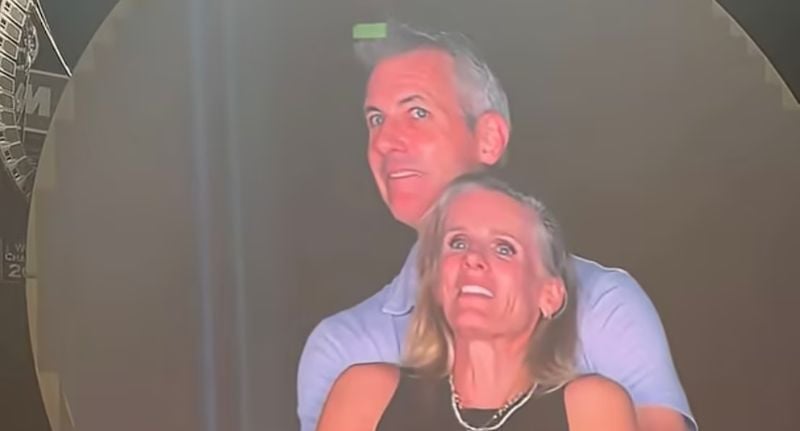
Why CEO authenticity is now a shareholder issue
The days of the faceless leader are over.
According to Havas Red Australia CEO Shane Russell, modern executives can’t lead effectively from behind the glass of a screen, not when employees, investors, and the public expect constant honesty and presence.
“These days, leaders have to be forward facing,” Russell told Mediaweek.
“I mean, you can look at many examples in the Australian market where CEOs or executives are being pushed out for various things. They’ve got to take the front foot, be in control of the message and the narrative as much as they can and be a representative, not just of themselves, but of the entire organisation,” he said.
Russell’s comments come off-the-back of Havas Red global white paper In Plain Sight: The New Reality of CEO Visibility and Influence, which examines how leadership visibility has evolved in a time of fractured trust, media fragmentation, and generative AI.
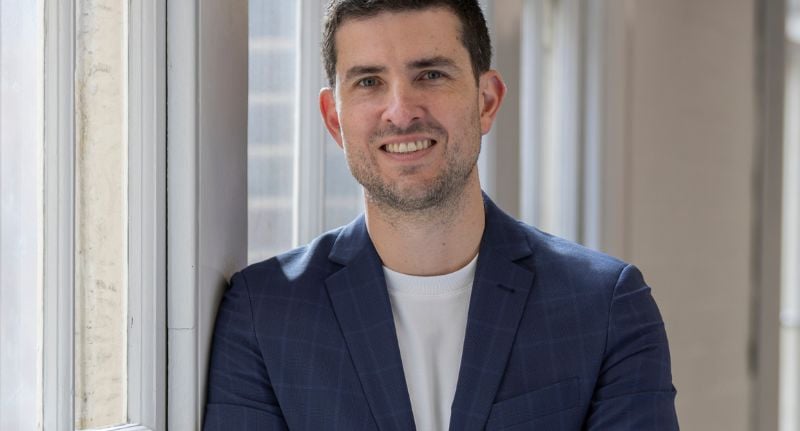
Shane Russell, CEO of Havas Red Australia
Leading with empathy in a chaotic world
Russell admits he feels the pressure himself. “Running an organisation of our size, it’s certainly something I think about all the time,” he said.
For him, the principle is simple but powerful: lead with empathy and humanity. “That is number one for me, especially in our business, because we’re in a people business,” he said. “And we represent clients across all types of areas, from healthcare to corporate to consumer.”
He believes that after years of upheaval, from economic shocks to hybrid work, empathy has become a strategic necessity, not a soft skill.
“The world feels chaotic for most people right now,” he said. “We’ve all come through a major transition in the last five years, the work environment’s upside down, the economy’s in a different place, there’s change everywhere. If we lead with empathy, at least we help give people a place at work where it might feel a bit more normal than what perhaps is happening externally.”
But empathy, he adds, starts with clarity. “It all begins with honesty and transparency,” he explained. “It doesn’t mean you have to like and read everything that the CEO or the C-suite communicates, but if communication with clarity happens, you aren’t left wondering.”
The transparency test
Russell said the need for openness now stretches across every stakeholder group – from employees to investors to clients.
“We’re seeing a very clear through line now that the expectations from all stakeholders is absolute honesty, transparency and timeliness,” he said.
“People have wised up to the fact that information is all readily available. Everything is on the record, whether it’s internal or external, so you’re better off getting ahead of it, being very honest and transparent and timely and human about the way we communicate.”
He even points to world leaders as examples – for better or worse. “Maybe perhaps a bad example, but perhaps a good one is even look at the most powerful person in the world,” he said referring to Donald Trump.
“He communicates openly, transparently, and timely all the time… whether we like it or not. But it’s certainly, I think, expected as a core function of a CEO today,” Russell said.
And that expectation comes with a sharper edge: “There’s also the bulls**t test,” Russell laughed. “People are so wise up to it. And if you get known as someone who’s fluffing around and not being those things, people make their own mind up and they lose the trust right away.”

Donald Trump’s social media
Everyone’s a broadcaster now
The Havas Red report identifies a growing challenge for leaders: the erosion of inherited credibility.
Being a CEO no longer automatically earns trust. Instead it has to be demonstrated daily through words and actions. That reality has made communication both more difficult and more urgent.
Russell says the media landscape itself has changed how leaders must operate. “Everyone thinks they’re a journalist and, in some ways they now are, because they get to take information and put it out on public forums.”
That means leaders can’t rely on one communication channel to get their message across.
He explained: “You can’t afford to not be in any of those channels because the reality is consumers are completely fragmented in how they receive and consume information now. It might be great to land the headline story in a newspaper talking to shareholders, but you might not reach everyone anymore because we’re all being fed our news and information through different channels.”
Still, Russell believes traditional media remains crucial. “I think it’s value is never more important, or more necessary, as a channel, both as a public service, but also for communication and analysis,” he said.
“I think it’s got a more important role than ever going forward, especially as we look at the dismantling of trust all around us and understanding who’s credible and who’s not.”
Comms takes its seat at the top table
One major shift Russell’s seeing is structural, and it’s changing how organisations operate.
“The chief communications officer or the head of PR is now more likely than not reporting directly to the CEO,” he says. “It used to filter through marketing prior to that or through different folks. And I think that’s really important.”
That closer connection between the C-suite and communications function reflects a growing truth: leadership and storytelling are now inseparable. “You’re starting to see these direct lines between the communications function and the C-suite and the public,” Russell said.
It’s a demanding shift, but one that Russell believes is essential. In a world where silence reads as absence and inconsistency breeds mistrust, visibility isn’t a luxury anymore. It’s leadership.

Spotify drops a marketer’s album and backs it with impact data
Spotify has rolled out Tunetorials, an album made for marketing minds: six original tracks (and matching music videos) that turn ad planning lessons into songs.
Created with FCB New York, the campaign aims to make learning about Spotify’s ad tools not just digestible… but audible.
Spotify ANZ Head of Sales Adrian Bingham put it plainly: “Tunetorials is the latest innovative B2B piece from Spotify … what if learning about Spotify Advertising could be as fun as using Spotify?”
Turning ad theory into earworms
The campaign features six tracks performed by emerging artists, each translating an advertising concept into a catchy tune.
From planning multi-format campaigns to driving ROI, the lessons are woven through lyrics and visuals that make ad education sound, well, a little less like homework.
The data hits the right notes, too. Spotify says pairing audio, video and display can drive up to 90% greater sales lift than audio alone, while tools like Spotify Pixel help marketers measure and optimise results with ease.
In a study launched out of Australia (in collaboration with Neuro-Insight, Mutinex, Yahoo DSP), Spotify ads delivered twice the attention of social platforms, 51 per cent higher engagement, and stronger memory encoding.
“The ads you serve clearly make an impact and that’s reflected in the metrics,” Spotify’s Head of Advertising Research & Measurement Jan Bojko told Mediaweek.
He added that in Australia, the sophistication of both the market and measurement vendors made it a natural testbed: “If the maturity is there for audio, the maturity is there for programmatic.”

Making learning fun again
Bingham said the idea was to bring Spotify’s trademark creativity to its B2B education: “We know Spotify advertisers love creativity and music, so we met them there, transforming how-to lessons into original songs and music videos.”
He added that Tunetorials was designed as a “surprise-and-delight campaign that blends education with entertainment, so learning doesn’t feel like a chore,” and ultimately, to “inspire brands and agencies to see Spotify’s suite of ad solutions in a whole new way.”
From vinyl to video
The campaign doesn’t stop at streaming.
It includes two animated music videos, a live-action short, and even a limited-edition vinyl pressing – putting what Spotify calls “the soundtrack to success” directly into the hands of brands and agencies.
Short-form cuts of each track will also roll out across Spotify, LinkedIn, Meta and YouTube.

The feed-or-be-fed guide to Black Friday and Cyber Monday
By Shannon Ingrey, VP and GM APAC at BigCommerce
As Black Friday and Cyber Monday loom, the stakes for Australian retailers have never been higher. Last year, Aussies spent nearly $7 billion across the four‑day stretch, cementing it as one of the most lucrative retail periods on the calendar.
Meanwhile, the Australian Bureau of Statistics reported 0.8% growth in retail turnover in November 2024, signaling the tangible boost retailers experienced from the promotions and heightened consumer awareness surrounding the event.
Opportunity is knocking for brands, but only if your product feeds are battle‑ready. Get them wrong, and all that traffic, click frenzy, and consumer intent could vanish into a competitor’s cart. So how can brands make sure their feeds don’t crack under pressure?
Here are five ways to make them bulletproof before Black Friday kicks off:
Titles and descriptions make or break you
Think of your product title like a neon sign in the CBD. If it’s dull, unclear or incomplete, shoppers will walk right past. Every channel has its quirks, but clean titles, rich descriptions and accurate specs are the basics. Smart brands add seasonal hooks like ‘Black Friday’ or ‘Cyber Monday’ to ensure their products surface in the right searches when consumers are moving at pace.
Downtime is the ultimate deal-breaker
A broken feed on Black Friday is like locking your shop doors when there’s a queue snaking round the block. Keep feeds clean, connected, and refreshing in real time. The savviest operators are using supplemental attributes like dynamic titles, event-specific landing pages, and personalised product suggestions to stay sharp at the crucial moments.
Label smart, bid smarter
Not all products are created equal. Use custom labels to flag your ‘Black Friday heroes’. These are your products with high-margin deals, fast movers and limited bundles. And remember to structure campaigns so the budget flows to where returns are highest. That way, your stars get the spotlight, and you don’t waste cash on slow burners.
Blend online and offline to win on convenience
Shoppers expect immediacy. According to BigCommerce’s 2025 ANZ Online Shopping Report, 59% of Aussies are willing to fork out $20 for same-day service. So if you’ve got a physical presence, turn it into an advantage. Promote click-and-collect, same-day delivery, or local inventory ads to cut through. For customers, the pitch is simple: get what you want, where and how you want it – and fast.
Fresh feeds win the clicks
Data synchronisation across all your channels is essential to maintaining accuracy in pricing and inventory, as well as consistency in branding. Out-of-date or mismatched data can lead to customer confusion, especially when it comes to descriptions or product attributes that drive decisions. Feed management solutions like Feedonomics help keep your feeds current through frequent or real-time sync capabilities to keep listings consistent no matter where they are or how often they change.
Finally, keep in mind that Black Friday and Cyber Monday are the ultimate stress test for your data, operations, and brand experience. Clean and optimised product feeds are the backbone of performance across every channel.
In a market shaped by inflationary pressures, picky consumers and fierce competition, a messy feed can kill momentum when it matters most. Get it right, though, and you won’t just win big in November. You’ll build loyalty, gain repeat customers, and generate a sales run that extends well into the new year.
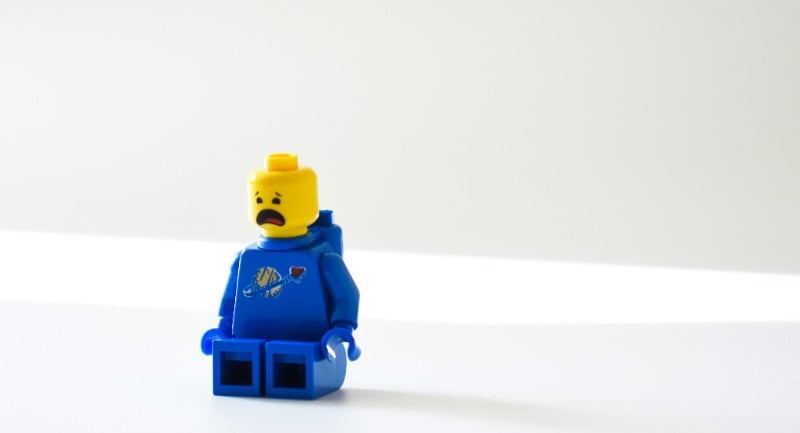
Forget being seen. Be felt. In advertising, visibility is important but overrated. We need to talk more about feeling. Deep down, gut-level feeling
Written by Dave Jansen, Connecting Plots Founding Partner & CCO
In advertising, visibility is important but overrated. We need to talk more about feeling. Deep down, gut-level feeling.
Here’s the thing: Nobody cares about a message unless it punches them in the feels. Science backs me up. Emotion is the cheat code to memory and decisions. If you’re not triggering something real, you’re just white noise.
At a recent industry event I attended, everyone was banging on about delivery and data, but nothing else was said about creativity for emotion…
It’s like everyone forgets that a perfectly targeted, forgettable ad is still a forgettable ad. Or a shit one if you will. If people don’t feel something, they don’t remember. And that’s when you’re wasting your time and your money.
This matters now more than ever.
We’ve got content coming at us from every angle and it’s only going to get worse. AI is already flooding us with meaningless, emotionless crap. Spend five minutes on LinkedIn, Pinterest or Tiktok and you’ll be inundated with spec ads and experiments that lack any of the pesky things like feeling or a plot line.
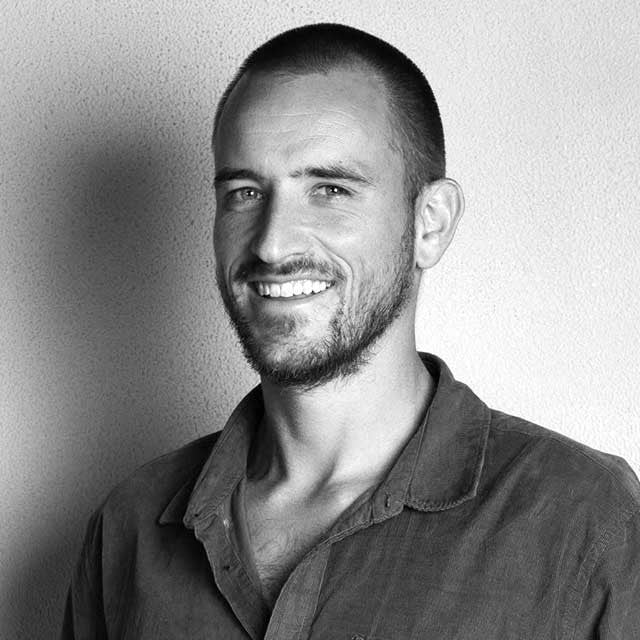
Dave Jansen
Don’t get me wrong, I’m loving the craft that AI is unlocking, but it won’t replace feeling or storytelling.
But what’s the antidote?
I think it might be in simplicity. Getting back to basics. Telling powerful stories. Tell a good story and quality or aesthetic doesn’t matter. People will always gravitate to stories. We’ve been doing it for the past tens of thousands of years.
People are simple. They don’t care about ads. And they certainly don’t care about messaging frameworks or perfectly rendered scenes made by robots.
Make them laugh, cry, get goosebumps. Anything. They’ll remember you.
Yes, messaging matters. But never at the expense of emotion.
Go and watch the ‘Ship My Pants’ ad by Kmart. Fucking brilliant.
Now try and remember the last ‘free shipping’ ad you saw. There will have been hundreds this year alone, but you’ll probably remember none of them.
That’s why now is a good time to stop talking about the pipes and start talking more about the shit that’s going in them.
Admittedly, some of the problem comes from the very agencies banging on about emotion. They’ve been slowly killing it with 100-page brand guidelines (that no one reads) packed with bullshit rules that suffocate creativity and are impossible to implement.
Mental note. If your brand guidelines are a) 100+ pages and b) don’t translate into feeling, they’re useless. Chuck them in the bin and dig up the old ones from when things felt real.
Brands should behave like characters, like a sketch show cast or a content creator. They need to be open to being shaped by their fans.
Whether it’s a 30 second ad, the tone of an EDM or a poster… Whatever it is, keep it simple. Simple works.
The best brands live in people’s heads as a feeling. Because being seen is one thing. But being felt? That’s everything.
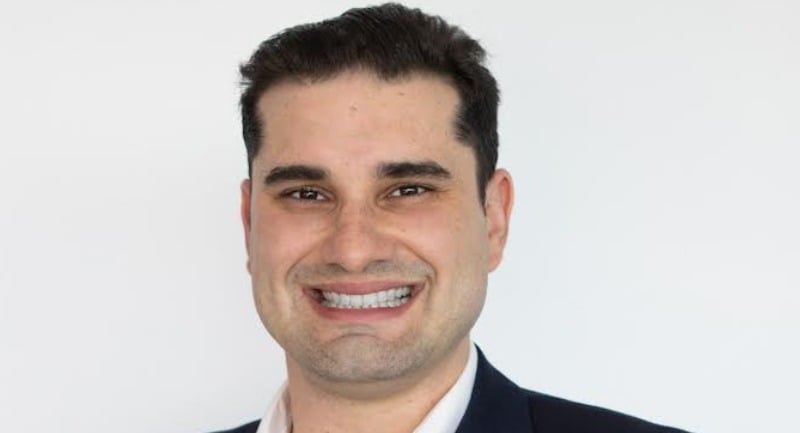
Are Media appoints Blake Talarico to lead commercial data strategy
Are Media has appointed Blake Talarico as its new Head of Commercial Data, tasking the former Nine executive with leading the rollout of Are Media Collectives and driving the company’s next phase of data innovation.
Talarico joins from Nine, where he specialised in commercialising data products and forging strategic partnerships with some of Australia’s largest advertisers and agencies. His appointment marks a key step in Are Media’s ongoing investment in audience insight and digital capability.
In the newly created role, Talarico will spearhead the launch of Are Media Collectives — a female audience segmentation tool spanning seven content verticals — while developing new data products and partnerships. This includes shopper intent segments built from Are Media’s first-party transactional data and new onboarding pathways allowing advertisers to match their own customer data with Are Media’s network of eight million authenticated users.
Anna Quinn, Director of Sales at Are Media, said: “We’re thrilled to welcome Blake to Are Media. His expertise in data strategy and commercialisation will be instrumental in launching *Are Media Collectives* and our new data products, ensuring we continue to deliver innovative, data-driven solutions for our clients and audiences.”
Talarico said the opportunity to help shape Are Media’s evolving data strategy came at an exciting time for the business. “By combining audience interest and intent data, transactional data and cross-platform engagement with Are Media’s trusted brands, we can deliver highly targeted campaigns that create measurable business outcomes,” he said.
“I look forward to working with the team to unlock the full potential of Are Media’s first-party data and shape the future of data-driven media in Australia.”
Are Media connects with 90 per cent of Australian women through brands including The Australian Women’s Weekly, marie claire, Better Homes and Gardens, and WHO. Its commercial division has increasingly focused on first-party data and integrated content commerce solutions to help advertisers reach engaged female audiences across platforms.
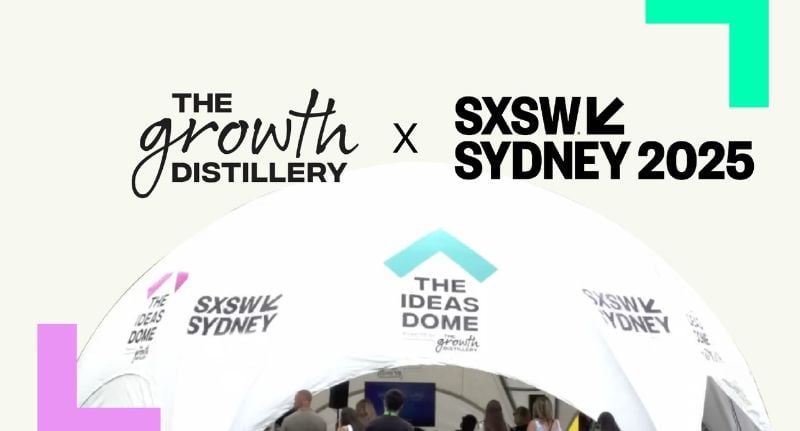
The Growth Distillery’s unveils most ambitious SXSW Sydney lineup yet
After a standout debut in 2024, The Growth Distillery is back at SXSW Sydney 2025 with an expanded line-up of speakers, research and interactive sessions designed to spark fresh thinking across media, marketing and culture.
The News Corp Australia–backed think tank will present a mix of headline events and original research – including an exclusive conversation with global happiness expert Mo Gawdat, a deep dive into Australia’s booming sports fandom, and the return of the Rules Don’t Apply vodcast.
“The Growth Distillery’s SXSW Sydney program this year represents our most ambitious showcase yet for bold ideas,” said Dan Krigstein, Director of The Growth Distillery.
“We are creating multiple touchpoints where brilliant minds converge to inspire new perspectives and spark the conversations that shape tomorrow.”

The Growth Distillery Director Dan Krigstein
Mo Gawdat at the MCA
At the heart of the The Growth Distillery’s 2025 program is an in-conversation event at the Museum of Contemporary Art, where Gawdat will join Krigstein to unpack what it means to find happiness and meaning in a tech-driven world.
The former Google X executive – known globally for his “Solve for Happy” philosophy – will share insights on stress, artificial intelligence, and the intersection between technology and humanity.
Step inside The Ideas Dome
Over at Tumbalong Park, The Growth Distillery will transform its Ideas Dome into a cultural playground exploring the forces reshaping Australian life and behaviour.
Attendees can expect a blend of humour, data and cultural commentary – from uncovering the “billion-dollar opportunities hidden in our daily frustrations” in What’s Grinding Australia’s Gears to exploring The Formula for Faith, which delves into how brands build loyalty that lasts.
Other sessions include
• Influence Disrupted: mastering the new rules of influence
• Tubi Trivia, hosted by news.com.au’s Andrew Bucklow, pitting pop culture buffs against one another
• The Daily Telegraph’s Jonathon Moran dissecting the newsroom’s evolution “from Typewriter to TikTok”
• news.com.au’s Mary Madigan in conversation with influencer Kayla Jade
• And the provocatively titled There’s No Such Thing As Unprecedented
The business of fandom
Meanwhile, The Growth Distillery’s Head of Commercial Leigh Lavery will take the stage at the ICC to reveal new insights into the economics of sports fandom.
According to the latest data, Aussie sports fandom has jumped 21% since 2021, now encompassing nearly 17 million adult fans. What’s more, 54% of those fans are engaging with sports content beyond live games – from podcasts to behind-the-scenes stories – creating a wave of untapped commercial opportunities.
For brands and codes, the message is clear: fandom isn’t just alive – it’s thriving in new spaces.
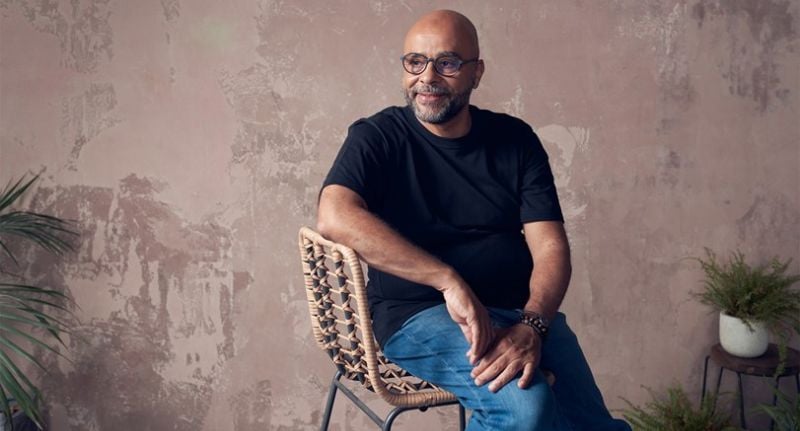
Mo Gawdat
‘Rules Don’t Apply’ returns for season two
Back at The Gallery, Krigstein will also record a second season of the vodcast Rules Don’t Apply, featuring SXSW Sydney’s most compelling voices – leaders, disruptors and iconoclasts sharing the unconventional wisdom shaping modern business and creativity.
The live format adds an energy that matches SXSW’s ethos: experimental, open, and ready to challenge convention.
The Growth Distillery is an independent research think tank powered by News Corp Australia. More information can be found on The Growth Distillery website or via LinkedIn.

oOh!media unveils Metro Tunnel assets, creating media-first dual-city network
oOh!media is set to transform Melbourne’s advertising landscape with the launch of its Metro Tunnel assets, giving brands a first-to-market opportunity to connect with commuters across five architecturally distinctive and high-footfall stations: Arden, Parkville, State Library, Town Hall and Anzac.
The Metro Tunnel, featuring a twin nine-kilometre underground corridor, will double the size of Melbourne’s CBD rail network and is expected to add around half a million passenger trips into the city each week.
Mark Fairhurst, chief revenue officer at oOh!, said the project represented a landmark opportunity for advertisers: “The Metro Tunnel is a once-in-a-generation opportunity for advertisers to connect with audiences in premium environments built for high footfall. Not since the City Loop more than four decades ago have we seen a project that so dramatically reshapes how people move through Melbourne’s CBD. This is a chance for brands to be first, stand out, and play a defining role in the next chapter of the city’s story.”
Digital-first design and immersive storytelling
The introduction of oOh!’s fully digitised network will redefine commuter engagement across the new rail precinct. The rollout includes nearly 200 scalable digital formats across five key stations, featuring large and small 3D displays, a three-screen wraparound at State Library, and a 3D Anamorphic installation at Town Hall Station.
Strategically placed screens along escalators will create a continuous visual journey, enabling brands to deliver high-impact, full-motion storytelling throughout the commuter experience.
Expanding oOh!’s national transit footprint
With Sydney Metro and Melbourne Metro Tunnel both part of oOh!’s growing transit portfolio, advertisers now have access to a media-first network spanning Australia’s two largest CBDs. The combined reach offers exposure to millions of commuters daily, with the potential for cross-city creative domination and consistent campaign delivery.
Fairhurst added: “When we launched Sydney Metro last year, advertiser demand was instant. Brands were quick to recognise the power of reaching large, highly engaged audiences in rail environments. Now, with both Sydney and Melbourne in our network, we’re offering a media-first opportunity for brands to dominate both cities simultaneously. It’s a bold, unmatched moment in Out of Home.”
Timing with major Melbourne events
The launch aligns with Melbourne’s peak summer calendar, including the Boxing Day Test, Australian Open and Formula 1 Grand Prix, maximising exposure during a period of heightened visitor activity.
Sydney Metro has already recorded more than 73.8 million passenger journeys in its first year, highlighting the growing demand for modern, high-impact transit advertising environments.
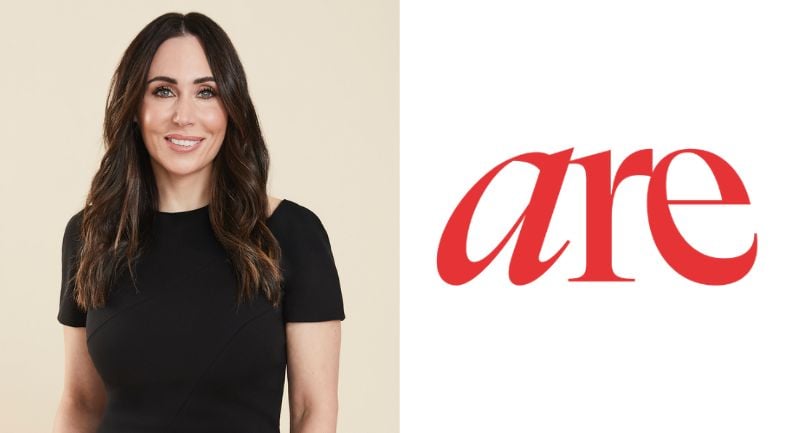
Are Media launches ‘Collectives’ data product at luxury showcase
Are Media has launched a new female-led data product, Are Media Collectives, as part of a wider suite of innovations revealed at its New Era of Luxury showcase in Sydney.
The event, held on Wednesday 8 October at The Pillars and Eleven Barrack, brought together luxury brand leaders, agency executives and editors from across Are Media’s portfolio, including ELLE, marie claire, Gourmet Traveller and belle.
Hosted by Jane Huxley, CEO, and Anna Quinn, Director of Sales, the event explored how data, creativity and cultural influence are converging to define the future of luxury media. It opened with a keynote from Gourmet Traveller editor David Meagher and featured research by UK consultancy The Future Laboratory on how technology and shifting values are reshaping trust and creativity.
A panel discussion followed, featuring ELLE editor Jessica Bailey, marie claire editor Georgie McCourt and belle editor-in-chief Tanya Buchanan, moderated by Nicky Briger, Are Media’s General Manager of Luxury. The group discussed bold content, creative risk-taking and immersive audience experiences.
Female-led data segmentation
At the heart of the showcase was Are Media Collectives, described by the company as Australia’s most advanced female-led customer segmentation tool. Built on Are Media’s extensive first-party data, the platform will allow advertisers to target unique audience segments across the publisher’s digital network.
Anna Quinn said the launch marks the first in a series of new data products that will expand in 2026. “Are Media Collectives is the first of our new data products we will launch to allow our agencies and advertisers to target our unique first-party audiences across Australia’s largest female network,” she said.
“Our goal is to create measurable business outcomes through innovative use of our data products. By combining deep audience insights with decades of editorial instinct, we help brands show up in ways that are relevant, resonant and beautifully unexpected.”
New luxury brand initiatives
Alongside the data product, Are Media announced new initiatives across its luxury titles, including:
• ELLE Fit – a fitness-led vertical blending editorial storytelling, immersive experiences and shoppable extensions.
• Big Week of Beauty – a national beauty activation across video, social and e-commerce platforms.
• Gourmet Traveller Hotel & Travel Awards – expanding nationally with new content-to-commerce opportunities.
• marie claire International Women’s Day and Sustainability Awards – evolving into consumer-facing events.
• Masterclass Styling Sessions – interactive, shoppable experiences hosted in-store and online.
Nicky Briger said the initiatives reflect the intersection of technology and human connection driving luxury media. “We’re entering a new era where technology and humanity converge. By combining our audiences, premium content and brand partners, Are Media is creating powerful new pathways for marketers eager to connect with consumers and activate intention.”
Are Media describes its approach as “where connection ignites intention”, a positioning that aligns with its broader strategy to redefine audience engagement across premium lifestyle media.
Top image: Anna Quinn
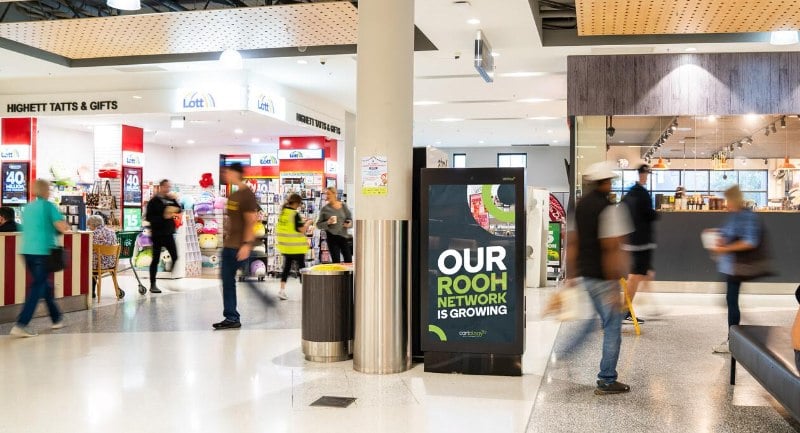
Cartology extends Retail Out of Home partnership with Region Group
Cartology and Region Group have extended their long-term partnership for Retail Out of Home (ROOH) representation across the property group’s portfolio of more than 77 shopping centres nationwide.
Under the renewed agreement, Cartology will continue to install, manage and operate its extensive digital screen network within Region Group centres, including the rollout of 26 new small-format screens. The additions bring Cartology’s total small-format ROOH presence within Region Group’s assets to more than 320 screens.
The Region Group portfolio includes over 2,000 specialty tenants and is anchored by major retailers such as Woolworths and Coles. The network provides advertisers with a national platform to connect with both regional and metropolitan shoppers in high-frequency retail environments.
Greg Power, Cartology’s Head of Commercial Partnerships (ROOH), said the renewed partnership represents an important step in scaling Cartology’s national footprint.
“We are incredibly pleased to extend our successful partnership with Region Group, which contributes greatly to our network of over 3,400 screens nationwide,” Power said. “Through Cartology’s deep understanding of customers, our Retail Out of Home network goes from strength to strength, giving brands the scale and targeted reach to connect with high-frequency shoppers, delivering impactful interactions every day.”
Mircina Mayas, Partnerships Manager at Region Group, said the ongoing relationship reflects a shared focus on delivering value to shoppers and tenants.
“Our long-standing partnership with Cartology is built on a shared vision for creating exceptional customer experiences,” Mayas said. “Through our retail partnerships, we deliver more connected and valuable shopping experiences across Australia.”
The partnership underscores Cartology’s continued investment in customer-led media solutions and its commitment to driving effectiveness for brands in the Retail Out of Home sector.
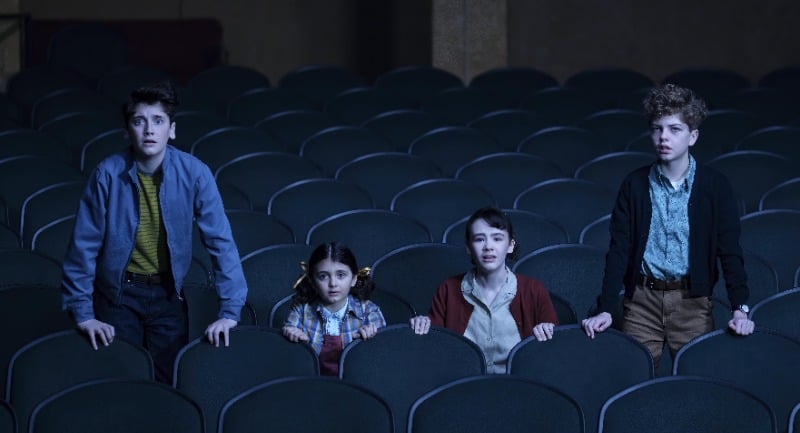
HBO Max lets fans choose fear or comfort at IT: Welcome to Derry launch – and tickets are free
HBO Max is letting fans decide how much terror they can handle when IT: Welcome to Derry debuts later this month, with a one-night-only immersive screening experience that puts the power of fear in their hands.
On Monday, 27 October, the Hayden Orpheum Picture Palace in Sydney’s Cremorne will transform into the “Derry Theatre” for the exclusive IT: Welcome to Derry – Split Scream event. Guests will choose between two viewing modes: “Scream Mode” for full-throttle fear or “Safe Mode” for those who prefer their horror with the lights on.
The experience is inspired by the new HBO Original series IT: Welcome to Derry, a prequel to IT and IT Chapter Two, from filmmakers Andy Muschietti, Barbara Muschietti and Jason Fuchs. The eight-episode series premieres on HBO Max on the same day, Monday, 27 October, with weekly episodes leading up to the finale on 15 December.
Scream Mode vs Safe Mode
Scream Mode promises an “enter if you dare” experience, filled with jump scares, eerie performances and unsettling surprises for die-hard horror fans.
Meanwhile, Safe Mode offers a gentler option, with soft lighting, plush seating and calming comforts: an environment designed for those who prefer their scares at arm’s length.
Exploring Australia’s fear factor
The Split Scream concept aligns with new YouGov research commissioned by HBO Max exploring Australians’ complex relationship with horror. Around half of those surveyed said they would be more likely to enjoy “cosy horror” in a safe, well-lit cinema setting, while the other half prefer full-scale terror complete with jump scares and psychological dread.
The findings also revealed that clowns rank among the top three screen frights for 2.4 million adults, while psychological horror (38 per cent) and supernatural themes (29 per cent) dominate viewers’ biggest fears. One in five respondents cited creepy crawlies like spiders or snakes as their most terrifying tropes.
The research found women are nearly three times more likely than men to hide behind pillows or blankets, while men reported being more frightened by monstrous figures such as vampires and werewolves.
How to get tickets
Fans can redeem two complimentary tickets to the IT: Welcome to Derry – Split Scream experience via this link on a first-come, first-served basis. Tickets will be available to the public from 11:00am on Saturday, 11 October.
Tickets are free but strictly limited.
Event details
• What: IT: Welcome to Derry – Split Scream Experience
• When: Monday, 27 October 2025
• Where: Hayden Orpheum Picture Palace, Cremorne
• Tickets: Complimentary (x2) via this link
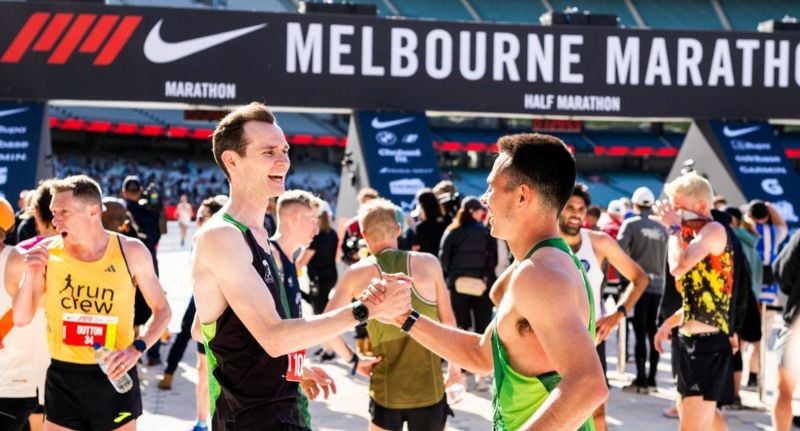
SEN laces up with Nike to bring the Melbourne Marathon to life
Sports Entertainment Network (SEN) has teamed up with the Nike Melbourne Marathon Festival in a new partnership designed to reimagine how Australians experience one of the country’s most celebrated sporting events.
The collaboration will see SEN deliver six hours of live and on-demand content across its multi-platform network, capturing the emotion, endurance, and atmosphere of race day, from elite athletes chasing records to everyday runners achieving personal milestones.
Taking place on Sunday 12 October, the sold-out event will now reach audiences far beyond the Melbourne streets, with SEN set to integrate digital storytelling, live commentary, and exclusive behind-the-scenes content.
‘A festival of human stories’
For SEN CEO Craig Hutchison, the partnership represents more than just coverage, it’s about creating connection through shared experience.
“The Nike Melbourne Marathon Festival is one of Melbourne’s most iconic events, and we’re thrilled to partner with it in a way that elevates the experience for runners, spectators and fans alike,” Hutchison said.
“Through our multi-platform coverage, we’ll bring the emotion, grit and triumph of race day to life. This partnership reflects our commitment to storytelling, innovation and celebrating the human spirit through sport.”
Across SEN YouTube, SEN TV, the SEN App, and the MCG Big Screen, live coverage will be complemented by real-time race commentary from Cam Luke, on-course reporters capturing atmosphere from key points, and selected runners wearing microphones to share their unfiltered experiences mid-race.
Post-event, audiences can dive into highlights, interviews, and features through SEN’s website, social channels, and YouTube, supported by editorial pieces and training content that explore the community and culture behind the event.
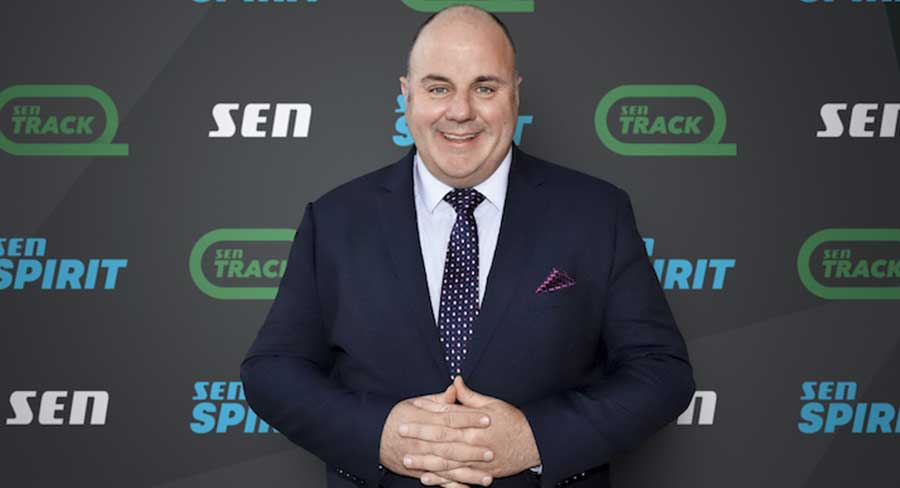
SEN Craig Hutchison
‘More than just running’
For Marcus Gale, Event Director of the Nike Melbourne Marathon Festival, the partnership underscores how the event has evolved into a broader cultural moment for Melbourne.
“We’re excited to partner with SEN to show how the Nike Melbourne Marathon Festival has simply transcended just running,” Gale said.
“The event represents another major event cultural moment. The festival is about community, connection and making memories. This partnership with SEN will help us tell this story to an even greater audience.”
With all major events sold out, the focus now turns to celebration, both on the course and off.
The festival weekend will also feature the Chobani Fit Walk, offering participants the chance to experience their own finish-line moment inside the MCG, and the Bupa Healthy Cities Mini Marathon, giving kids aged 12 and under their first taste of the running spotlight.
Legal
Abbie Chatfield sued by former friend
The Australian’s Will Seitam and Joanna Panagopoulos report court documents allege Chatfield shared private messages and labelled Kelley a “right wing troll” in a series of May posts.
Kelley, for his part, is not playing, having hired top defamation lawyer Sue Chrysanthou SC.
Former Australian actor faces possible execution in China
As The Daily Telegraph’s Charlotte Karp reports, Gilespie, now 61, was arrested in 2013 when Chinese authorities found 7.5kg of methamphetamine in his luggage at Guangzhou’s Baiyun Airport.
He has always insisted he was innocent.
Media
Taylor Swift shuts down Super Bowl rumours
The BBC’s Pete Allison reports Tay-Tay has confirmed she didn’t reject a slot at the Super Bowl halftime show.
The singer telling Jimmy Fallon on The Tonight Show the rumour “isn’t true”, and that talks between her team and the NFL never even got that serious.
Streaming
Streamers push back on Aussie content quotas
Netflix, Prime Video, Stan, Disney and Paramount, via the Australia NZ Screen Association, rejected two models proposed by Arts Minister Tony Burke, arguing there’s no “market failure” to fix.
Prime Video and Paramount said they’d support a “fair and flexible” system, while Stan and Nine dismissed quotas outright.
California bans loud streaming ads
Now, California Governor Gavin Newsom has done something about it.
As The Hollywood Reporter’s Erik Hayden details, he’s signed a new law requiring platforms like Netflix and Disney+ to ensure ads aren’t louder than the shows or movies they interrupt.
Social media
Denmark plans social media ban for under-15s
Their ban goes even further than Australia’s proposed one, which will come into force for under-16s in December.
AI
Aussie authors set for payout after AI book theft
As The Australian’s Caroline Overington reports, the deal follows claims that Anthropic used more than 500,000 books to train its AI models without permission, with authors tipped to earn around $4,500 per title.
The open web faces its biggest shake-up in decades
Google’s new AI Overviews now serve direct answers instead of links, cutting publishers out of the loop.
As the ABC’s James Purtill details, Aussie news outlets are reporting sharp drops in search traffic, with one recording a 35 per cent fall.
OpenAI’s Sora watermark already easy to remove
A quick search for “Sora watermark” brings up multiple free tools that erase it instantly, 404 Media’s Matthew Gault found.
